Flaounes pr. flah-OU-ness (singular flaouna) is a traditional Cypriot Easter cheese filled bread.
They are made with an aromatic yeasted phyllo dough, filled with a special Cypriot cheese, called Pafitiko, made during the Easter period especially for flaounes, flavoured with Masticha (mastic resin), mahlepi (mahlab) and mint.
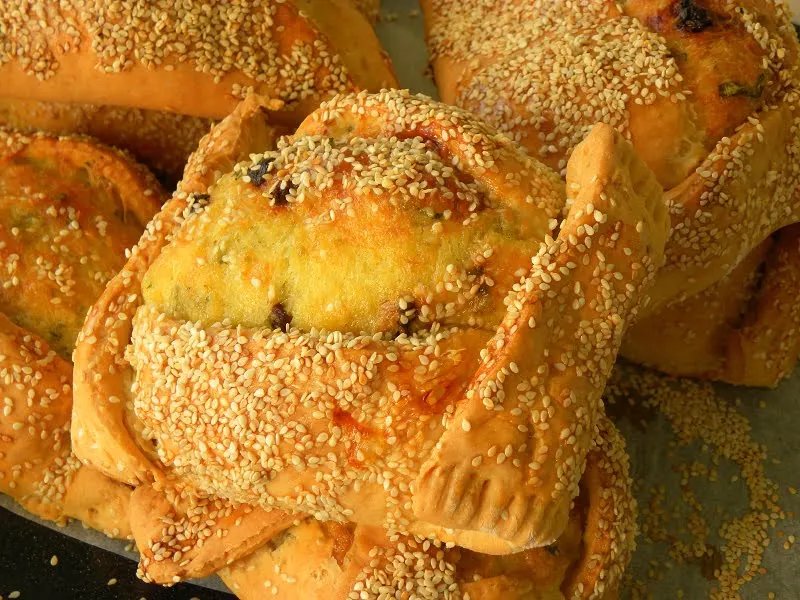
What cheese can I use to make flaounes?
In the older years, people were more faithful, so milk and eggs were not consumed during the 48 days of fasting.
What could they do with the milk? Cheese was a solution.
What about the eggs, since they did not have refrigerators?
They had ways of preserving eggs for a long time and one method was keeping them in baskets among wheat straw, in a cool place.
Having lots of cheese and leftover eggs seemed like a great way to use them and make flaounes. This is just a thought of mine but it makes sense!
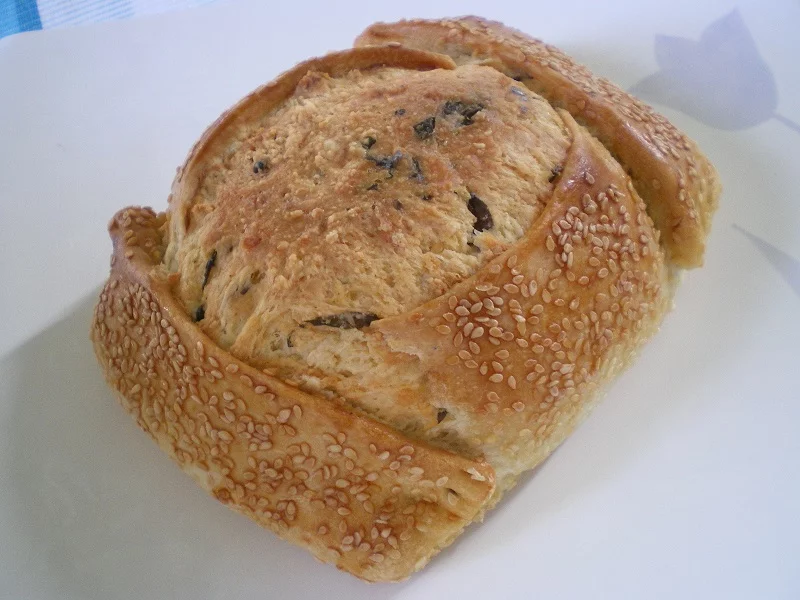
What cheese can I substitute Paphitiko cheese?
In Greece, this cheese can be substituted by a mixture of other Cypriot cheeses such as halloumi or kaskavalli or the Greek cheeses ladotyri Mytilinis, graviera, kefalograviera and some kefalotyri.
Kefalotyri is usually very salty, so don’t add too much.
Outside Cyprus you can substitute Paphitiko cheese with haloumi and/or pecorino and/or mild cheddar and/or romano.
The dough itself is so delicious that we always make more, in which we mix the left over pieces of grated cheese in order to make a cheese bread called “tyropita”. The same dough is also used to make koulouria, which is a very aromatic bread.
Small flaounes (around 9 cm – 3 inches), called flaounitses or flaounoudes, are made in a triangle shape, year round with the basic dough recipe and grated halloumi, eggs and mint, as filling.
These are served as snacks or finger food at parties.
History of Flaounes:
It is believed that the word flaouna / flaounes is reminiscent of an ancient Greek kind of bread made with nuts, called πᾰλάθη (palathi) > fláo > flaon > flado > fladonem > fladonis etc.
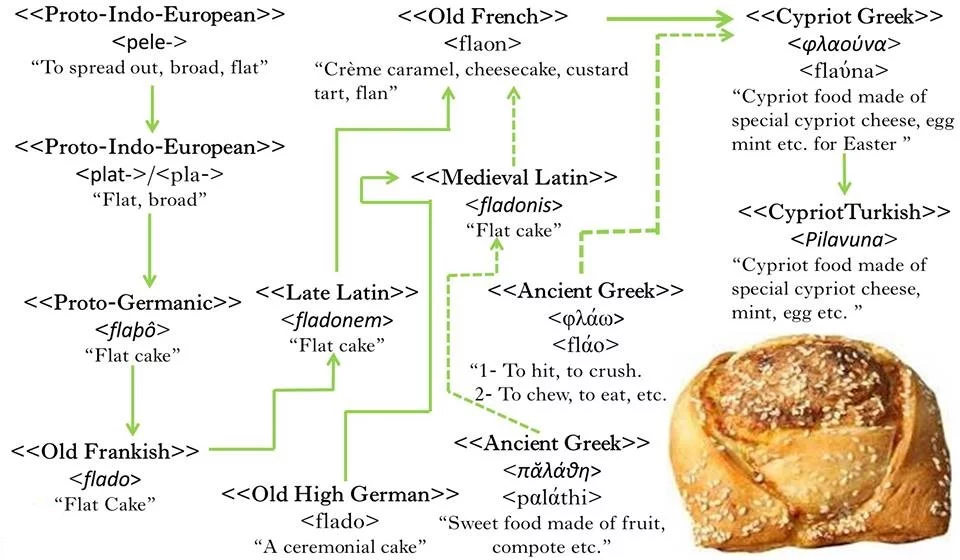
This bread was offered to children , who went from house to house singing about the coming of swallows and spring.
This tradition continued during the Byzantine era and until recent years, flaouna was offered to children or even grown-ups, as a treat when they went from house to house to announce the resurrection of Christ or to wake up the people to go to church for the midnight mass on Easter Saturday.
The ancient palathi also contained some dried figs.
Source : My translation, from the Cypriot Encyclopaedia: Μεγάλη Κυπριακή Εγκυκλοπαίδεια. Επιμέλεια: Άντρου Παυλίδη, Λευκωσία (1984-1996).
When can I make Flaounes?
Traditionally flaounes are made on Holy Thursday and it’s not an easy job.
These cheese breads are made with a very flavourful bread dough and filled with a cheese called “Paphitiko” made, during the Easter period, of 100% goat’s and ewes’ milk, especially for flaounes.
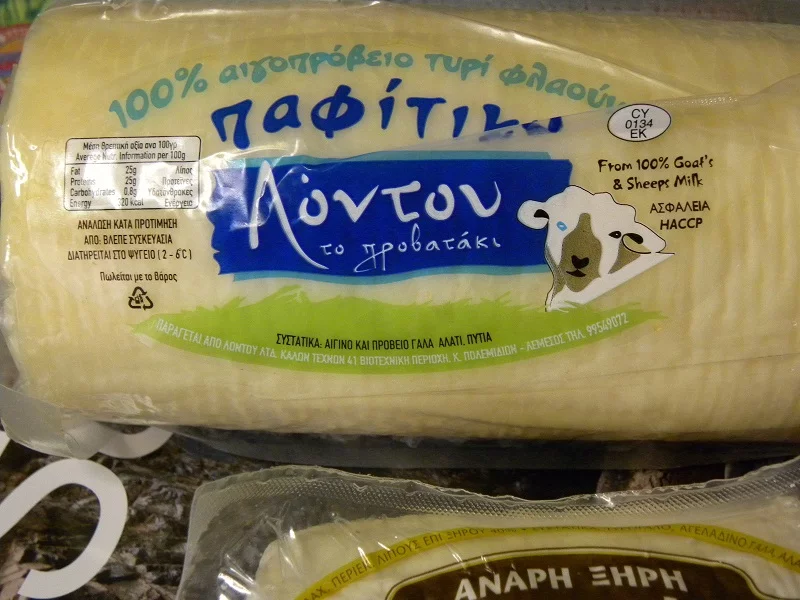
As the dough of flaounes is very unique and aromatic, we usually make more dough than necessary to make some “koulouria”, (bread dough in various shapes).
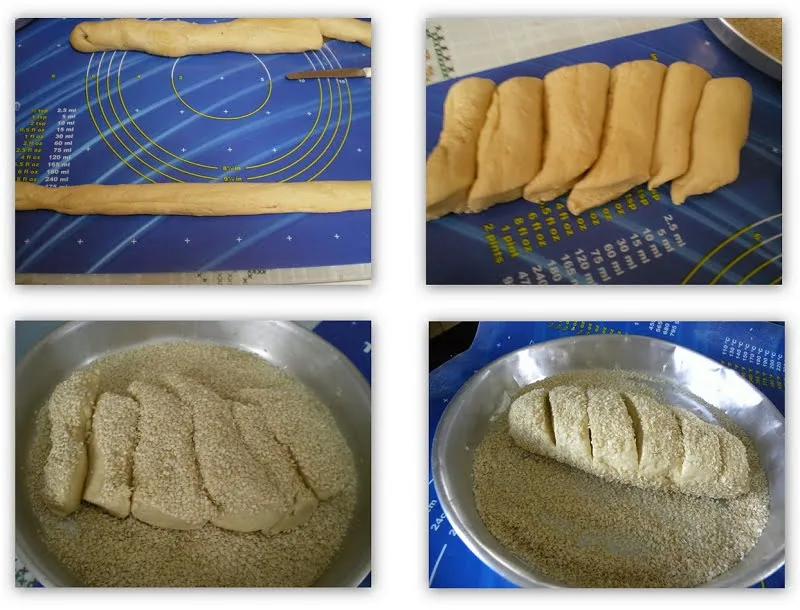
The preparations usually start from the previous day by making the filling.
The cheese is grated and eggs, yeast, spices and mint are add to the mixture.
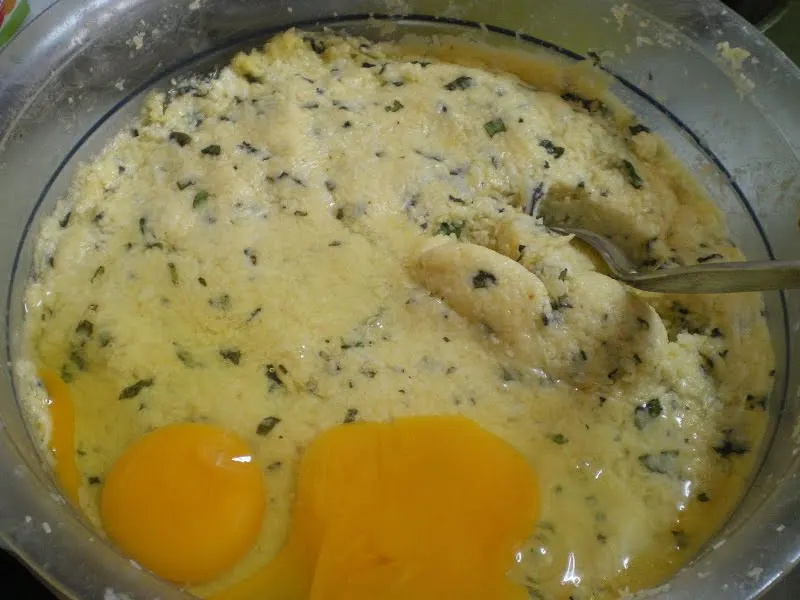
The filling is covered and refrigerated overnight in order to rise. The next morning, the filling is “awaken”, as we say in Cyprus.
This expression means that more eggs are added, to make the filling fluffy again.
If the filling is prepared on the same day, it should rest at room temperature, covered with a kitchen towel for a few hours to rise.
On Thursday morning, most of the female members of the family (grandmother, mother, daughter, aunts etc.,) get up from the crack of dawn to start preparing the flaounes as well as bread or “koulouria”, as well as to dye the Easter eggs.
Tsourekia were introduced to Cypriot cuisine much later.
Each member has its role. One rolls out the dough, another puts the dough in the sesame seeds, another adds the filling and shapes them and some one places them neatly between clean bed sheets, with a blanket on top to help them rise.
After they rise, the egg wash is added on top, they are placed in big baking trays and are covered again to rise. Then off they go to the bakery.
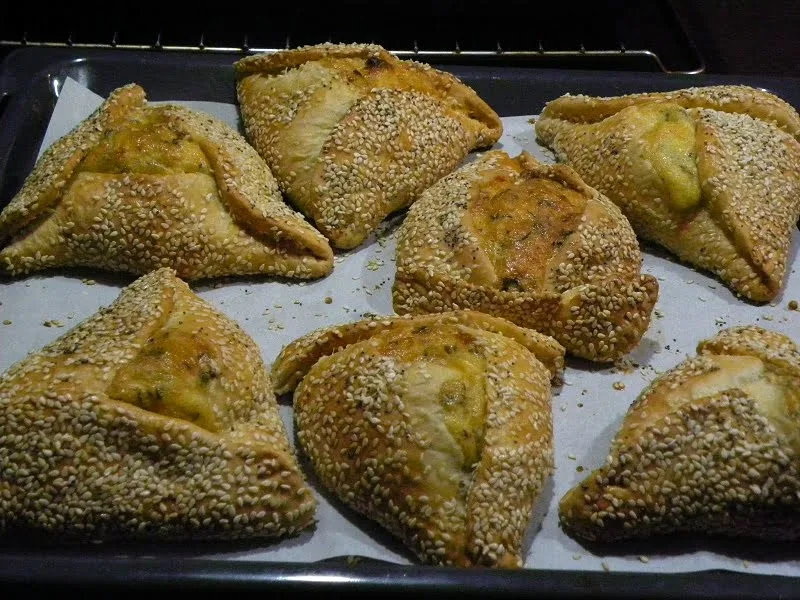
I have memories when I was young when we all used to help making them.
We had to take them to our neighbourhood’s “fourno” which was a traditional bread bakery with wood oven and we had to wait patiently for our turn to have ours baked.
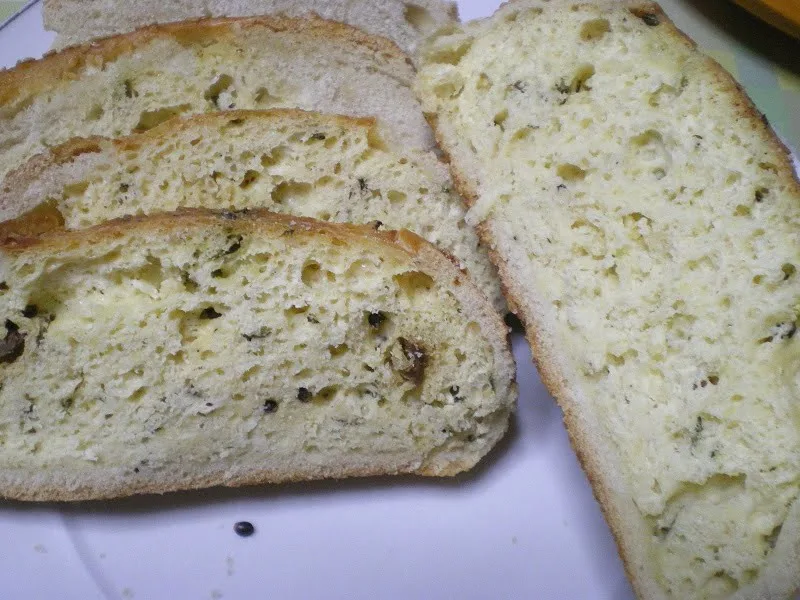
Note: The amount of dough used in the recipe makes 12 medium-sized flaounes and two koulouria.
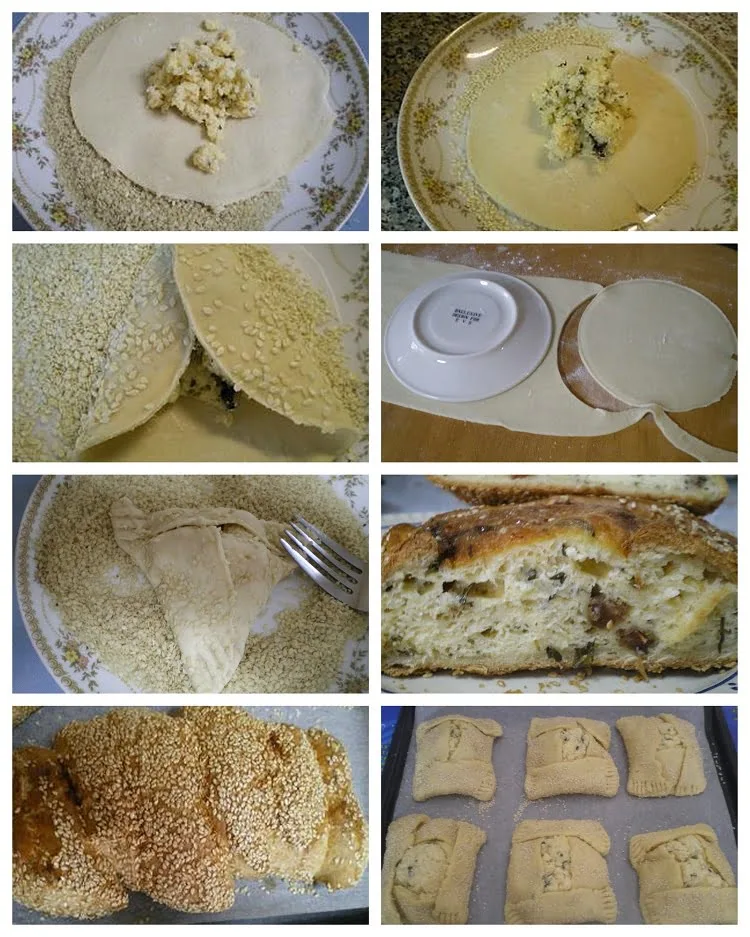
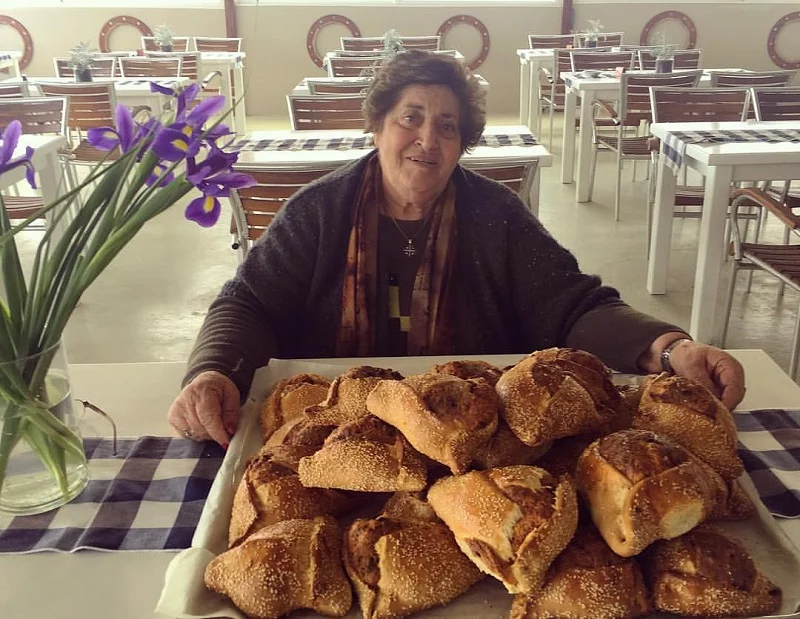
Notes:
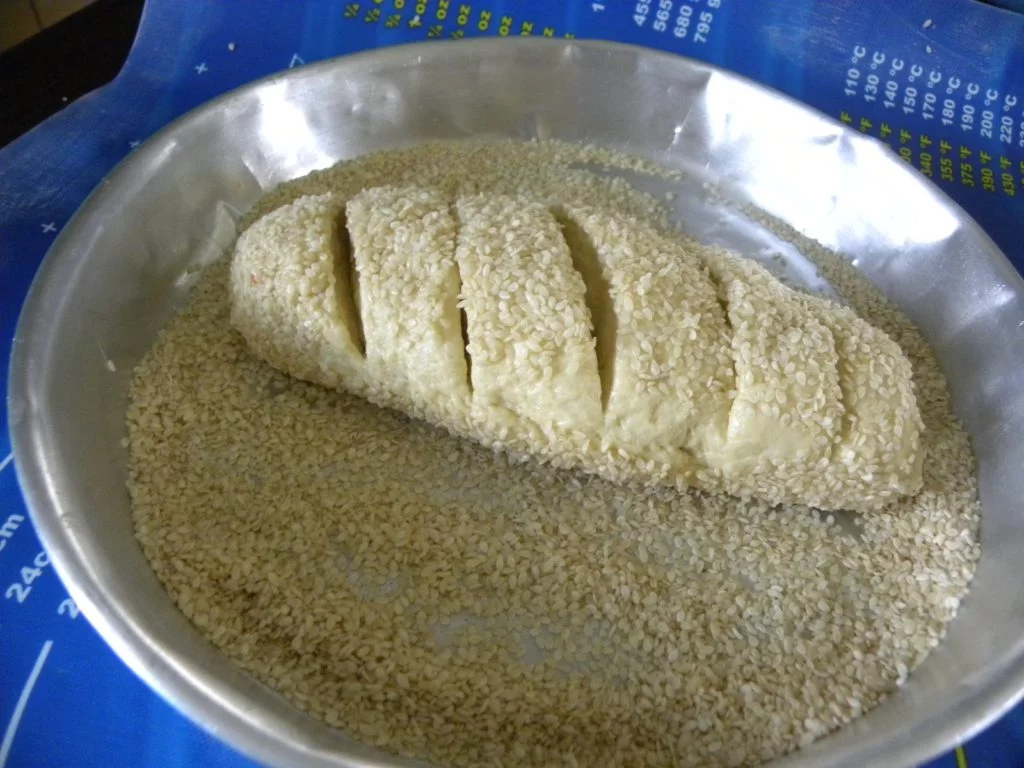
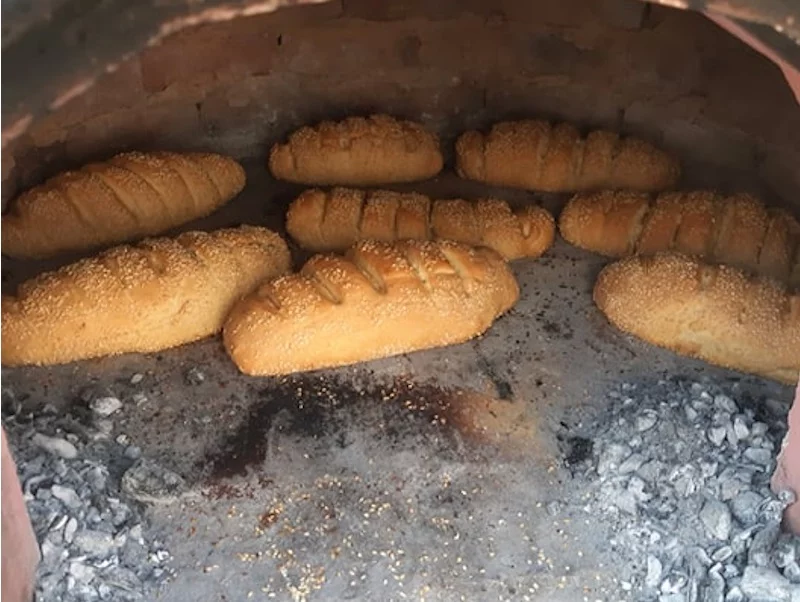
- In some parts of Cyprus, especially in the region of Larnaca, sugar is added to the cheese mixture. Also, apart from the usual spices and herbs used in the filling, some people, including my elder sister also adds some “kanaouri” (hemp seeds} in the filling.
- Instead of fresh yeast, dry yeast may be used (about 12 grams – 0.42 oz per kilo (2.20 lbs) of flour, dissolved in lukewarm milk and a few tbsp of flour and a teaspoon of sugar). Be careful with fresh yeast as it may not dissolve properly. Pass it from a small sieve.
- Pound both quantities of mastic and mahlab simultaneously and use half of it in the filling and half of it in the dough.
- As I cannot find spry in Greece or other shortening, I substitute it with other vegetable short3ening or mild olive oil.
- If you have leftover dough and pieces of cheese, cut the cheese into smaller pieces and mix them with the dough and form them into a bread called Tyropita or Halloumopita.
- If you want to make koulouria with the remaining dough take a large piece and roll with your hands to make a long cord about 3 cm in diameter and about 50 cm long. Cut it diagonally with a knife in equal parts about 7 – 8 cm each and place each piece next to the other and join them together. Cover cheese bread or koulouria with sesame seeds and leave them to rise, (same way as flaounes) then brush them with egg wash. Bake in a preheated oven, to 180o C / 350o F, until golden brown.
- Flaounes can be stored in the freezer wrapped with cling film and aluminium foil for a few months. Thaw them and reheat and they are just as good as the fresh ones.
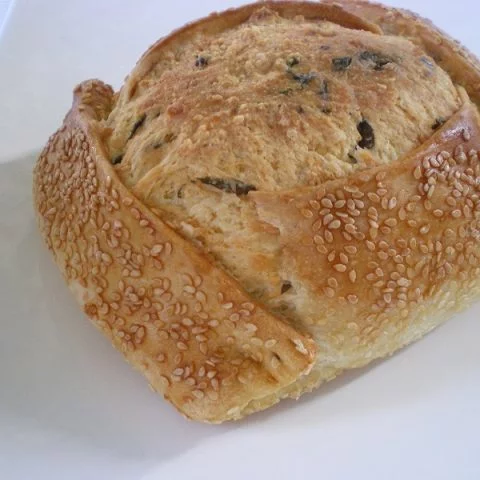
Flaounes (Cypriot Easter Cheese filled Bread)
Flaounes pr. flah-OU-ness (singular flaouna) is a traditional Cypriot Easter cheese bread made with an aromatic yeasted phyllo dough, filled with a special Cypriot cheese, called Pafitiko, made during the Easter period especially for flaounes, flavoured with Masticha (mastic resin), mahlepi (mahleb) and mint.
Ingredients
For the dough
- 2 kilos (4.40 lbs) bread or all-purpose flour
- 50 grams (1.76 oz) sourdough or fresh yeast
- 1 ½ cups of spry (or other vegetable shortening) or olive oil
- 8 - 10 mastic resins, pounded with 1 tsp of sugar
- 1 tsp ground mahleb
- Lukewarm milk (about 5 cups)
- 1 tsp baking powder
- 1/2 tsp salt
For Foukos (filling):
- 1.250 grams (2.75 lbs) Pafitiko cheese
- ½ cup fine semolina
- 25 grams (0.90 oz) fresh yeast
- 1 cup fresh mint, finely chopped (or 6 tbsp dried mint)
- 10 - 12 eggs
- 8 pounded mastic resins
- 1 tsp ground mahleb
- 1 cup sultana raisins
- 2 tbsp hemp seeds (optional)
- 1 tsp baking powder
For the egg wash:
- 2 beaten egg yolks
- 4 tbsp milk
- 350 grams (12.35 oz) sesame seeds
Instructions
- Pound mastic and mahleb together adding a teaspoon of flour or sugar.
- Grate the cheese and mix with raisins, semolina, baking powder, mastic, mahleb and mint. Dissolve the sourdough or yeast with 2 eggs (at room temperature) and mix with the cheese. Add the remaining eggs, one by one, mixing until the cheese have become a firm mixture. Less or more eggs may be required depending if cheeses are moist or not Cover with a towel or cling film and refrigerate.
- Next day add two more eggs and mix the mixture to become soft and fluffy and leave it for an hour to rest.
- In the meantime prepare the dough Mix flour, salt, pounded mastic and mahlab, add shortening or olive oil and rub into the flour using your fingertips until oil and fat is absorbed and looks like bread crumbs. Make a well and pour yeast which you have previously dissolved in lukewarm milk. Add remaining lukewarm milk gradually and knead until dough thickens and does not stick on your hands. Cover with cling film and cover with a woolen cloth and leave for about an hour or more to rise The procedure can also be made in a stand mixer. (The dough can be made the previous evening. Put it in a large bowl with a lid and store in the refrigerator to rise. Take it out of the fridge and bring to room temperature before rolling out the dough).
- When ready, add the sesame seeds in a plate or tray.
- Roll out the dough and make round or square shapes, about the size of a plate (I weigh each piece of dough around 200 - 220 grams). Place the dough on the sesame seeds and press the dough gently, so that sesame may stick on the dough. Reverse the dough and place a few spoonfuls of filling in the centre of the dough. Fold the sides to form either a square or triangle shape but leaving the centre uncovered.
- Using a fork, press the four corners (or three for triangle ones) of the dough to join. Place each flaouna on clean tablecloths or sheets and cover again with tablecloth and leave them to rise.
- Remove them to a baking tray lined with parchment paper and brush them with the egg wash, mixed with some sesame seeds.
- Preheat the oven to 180o C /350o F and bake them for about 25 minutes, then lower heat to 150o C / 302o F and bake until golden brown.
Notes
1) In some parts of Cyprus, especially in the region of Larnaca, sugar is added to the cheese mixture Also, apart from the usual spices and herbs used in the filling, some people, incuding my elder sister also adds some "kanaouri" (hemp seeds} in the filling
2) Instead of fresh yeast, dry yeast may be used (about 12 grams - 0.42 oz per kilo (2.20 lbs) of flour, dissolved in lukewarm milk and a few tbsp of flour and a teaspoon of sugar) Be careful with fresh yeast as it may not dissolve properly. Pass it from a small sieve.
3) Pound both quantities of mastic and mahleb simultaneously and use half of it in the filling and half of it in the dough.
4) As I cannot find spry in Greece or other shortening, I substitute it with olive oil.
5) If you have leftover dough and pieces of cheese, cut the cheese into smaller pieces and mix them with the dough and form them into a bread called Tyropita or Halloumopita.
6) If you want to make koulouria with the remaining dough take a large piece and roll with your hands to make a long cord about 3 cm in diameter and about 50 cm long. Cut it diagonally with a knife in equal parts about 7 - 8 cm each and place each piece next to the other and join them together.
Cover cheese bread or koulouria with sesame seeds and leave them to rise, (same way as flaounes) then brush them with egg wash Bake in a preheated oven, to 180o C / 350o F, until golden brown.
7) Flaounes can be stored in the freezer wrapped with cling film and aluminium foil for a few months. Thaw them and reheat and they are just as good as the fresh ones.
Nutrition Information
Yield 12 Serving Size 1Amount Per Serving Calories 881Total Fat 29gSaturated Fat 6gTrans Fat 0gUnsaturated Fat 21gCholesterol 222mgSodium 1139mgCarbohydrates 125gFiber 11gSugar 20gProtein 34g
This and many more traditional Cypriot recipes are included in my cookbook Mint, Cinnamon & Blossom Water, Flavours of Cyprus, Kopiaste as well as in Volume 2 of my e-cookbook.
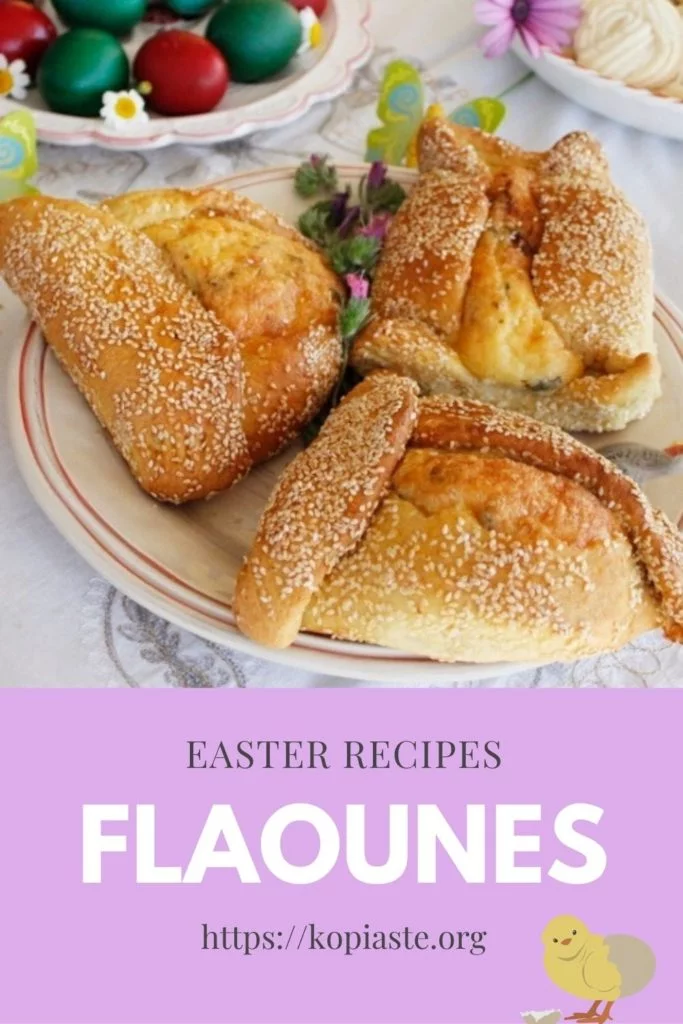
Kopiaste and Kali Orexi,

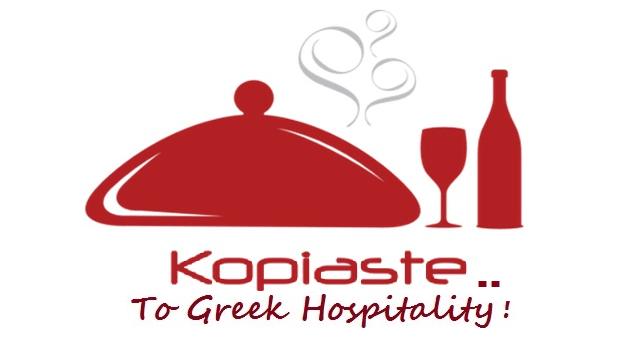
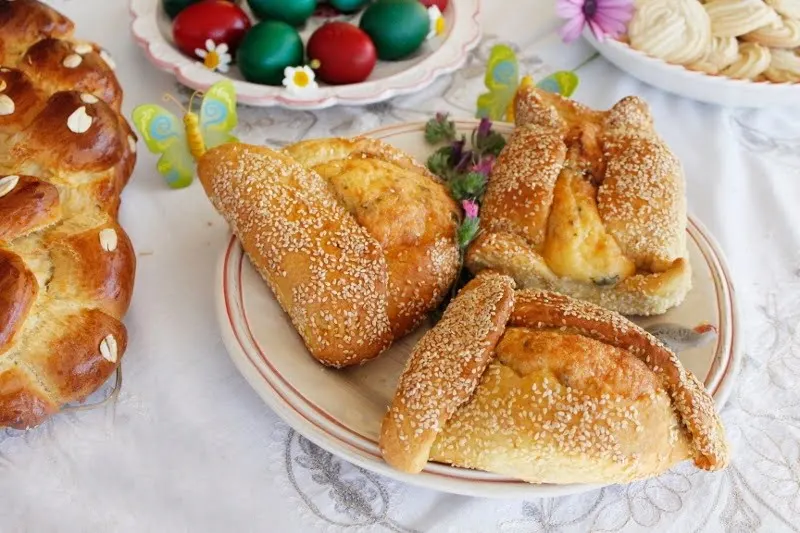
Flora
Tuesday 11th of May 2010
Yes Flaounes are made for Easter---what is Easter without a flaouna--but----traditionally no baking is done on Good Friday the holiest days of the Greek Orthodox calender---in my house and my aunts homes all preparations began on Holy Wednesday for baking on Thursday
Andrea
Thursday 25th of March 2010
Mike, Flaounes can taste quite bad if they are not made correctly. But when they are made good, they are the best food available in my opinion.
I tend to use a mix of greek cheeses, along with Halloumi, Anari and 50-60% mild english cheddar. It's very difficult for me to sit here and convince people to sub some greek cheese for english cheddar because Flaounes are really hard to make.
I suggest making a small batter with some dried english mild cheddar and making a few to know for next year. They really taste great with this cheese in my opinion.
Eleni Papadakis
Tuesday 16th of March 2010
please a easy recipe for flaounes
ivyliac
Tuesday 16th of March 2010
Eleni, this is the easy recipe for flaounes: <a href="http://www.kopiaste.org/2007/11/flaounes-cypriot-chee..." target="_blank">http://www.kopiaste.org/2007/11/flaounes-cypriot-chee...
christa
Monday 1st of March 2010
hi, we make flaunes every easter, the recipe i have has been handed down from my mother its very similar to yours. we use peccorino cheese thats available and mix with halloumi and other cheeses. we are a big family and we all get together in one home and all help including the very young members of six years and make it a fun day we produce over 250 flaunes and get the male memebers to do the mixing of the dough and also the making, and baking. we also make a large ammount of koulouria. we wish you all a happy easter
ivyliac
Monday 1st of March 2010
Nice to meet you Christa. Pecorino would be a lovely substitue for the Cypriot cheese. Yes, that's how we used to make flaounes as well. All the family helping. I am really happy you are still keeping our traditions.
Mike Costas
Tuesday 25th of November 2008
I lived on Cyprus for a few months including Easter. My dad was a Greek Cypriot and our family loved the experience. These Flaounes may look and sound good, but unless the locals did something wrong, they really didn't taste that good. We'll have to try this recipe and see how they turn out.
There was actually a version filled with sweets that was really good.
Every time we went somewhere during the Easter season, the relatives were giving us more Flaounes than we could eat ... a lot of fun.
If you want a treat ... go to Cyprus. It is a beautiful island paradise and the folks are wonderful.